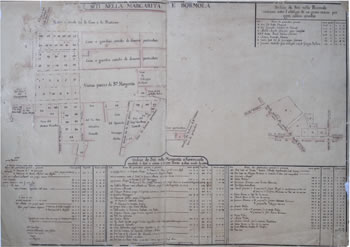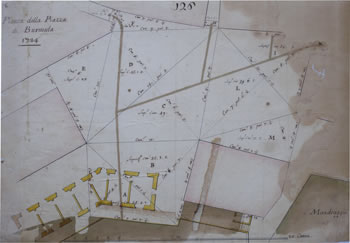Cospicua is situated in the most sheltered side of the Grand Harbour and has its own inlet into Galley Creek, extending up to a few metres from St Helen’s Gate. Historians and researches quote documents referring to Cospicua as Bir Mula (the Lord’s Meadow) and hence Bormla. Bormla’s proximity to the sea, along with the abundant supply of fresh water provided from its natural springs, must surely have attracted many early settlers. As far back as 800 BC the Carthaginians, and later the Romans, made good use of Bormla’s harbour facilities by shifting their major activities to the area.
Some caves in the vicinity date back to the Roman period and may have served as places of worship for the newly converted Christians. During the Byzantine period (c 395-869 AD) it was common practice to convert small rock-hewn caves into chapels. It is believed that on the cliff side of the valley, at the entrance of a tunnel leading to Dalman’s Cave in Marsaxlokk, there was one such cave annexed to a chapel dedicated to Our Lady of Help. This has been in disuse since the time of the Knights. Legend has it that in this tunnel, a pious woman was rescued by Our Lady when a fisherman was attempting to rape her, with the fisherman disappearing for good in a nearby cave. Could this legend have any connection with a Byzantine painting of Our Lady within that chapel bearing her name, and which eventually found itself in Cospicua’s Parish Church?
In the past, Bormla was much renowned for its savoury seafood, and its much treasured sandy beach. Both of these have since disappeared – the former as a result of water pollution, and the latter to make way for naval development. This way, agriculture and fishery in Bormla gave way to other forms of economic activity.
During the High and Late Middle Ages (1127-1530) Bormla’s trading and economic activity developed and increased, as witnessed by certain medieval street and square names such as Old Market Place or Bull Street – giving tribute to a time when herds of bulls were led through the area from vessels to the countryside.
 |
|
Street planning and development
|
 |
|
Planning Bormola Plan
|
During the Great Siege of 1565, the inhabitants of Bormla destroyed their dwellings, abandoned their land, and sought refuge behind the fortified walls of Citta Nouva and Senglea. However after the siege, Bormla acquired a new reputation as an attractive countryside resort. A considerable number of elite members of the Order, church dignitaries, as well as other prominent persons, constructed leisure homes in the form of palaces, residential villas, and beautiful gardens in some of the most attractive sites that the village had to offer. Town plans were laid out on a grid pattern in 1717.
The Great Siege served to highlight the strategic importance of Bormla and particularly that of the Santa Margerita Heights – giving rise to a military urgency to have them encompassed in a fortification plan so as to further protect the land-fronts of Vittoriosa and Senglea. Thus construction was commenced on the Margerita Lines, and eventually the Cottonera Lines, in an attempt to protect and shelter some 40 000 inhabitants in the case of a repeat attack.
However the bond that entwined Cospicua’s fate as a part of the Three Cities was certainly when Grandmaster Nicolas Cotoner (1663-80) initiated the building of the Cottonera Lines.
In 1722 Grandmaster Marc’Antonio Zondadari was so impressed by the progress achieved in the Cottonera fortifications that he raised Bormla to the status of city, naming it Citta Cospicua – the city attracting attention. Its motto ‘Ingens Amplecitur Agger’ – ‘I am embraced by a great bastion’, highlights the outstanding characteristics of its conspicuous fortifications.
Both under French and British Rule Cospicua’s fate was closely linked and dependent on the military presence in the area.
The British Fleet that ousted the French in 1800 was hailed at St Theresa’s landing place – right at the heart of Cospicua. It was here that the HMS Victory berthed and where Lord Nelson and Captain Alexander Ball where welcomed by the inhabitants of Cospicua who commemorated the event by naming two streets after these great naval commanders.
The berthing of so many vessels in Dockyard Creek and the erection of the Verdala Barracks confirms that it was no coincidence that under British rule Cospicua witnessed such a concentration and soldiers billeting in the area. This situation definitely served to influence and mould Cospicua’s way of life during the 19th and most of the 20th Centuries.

